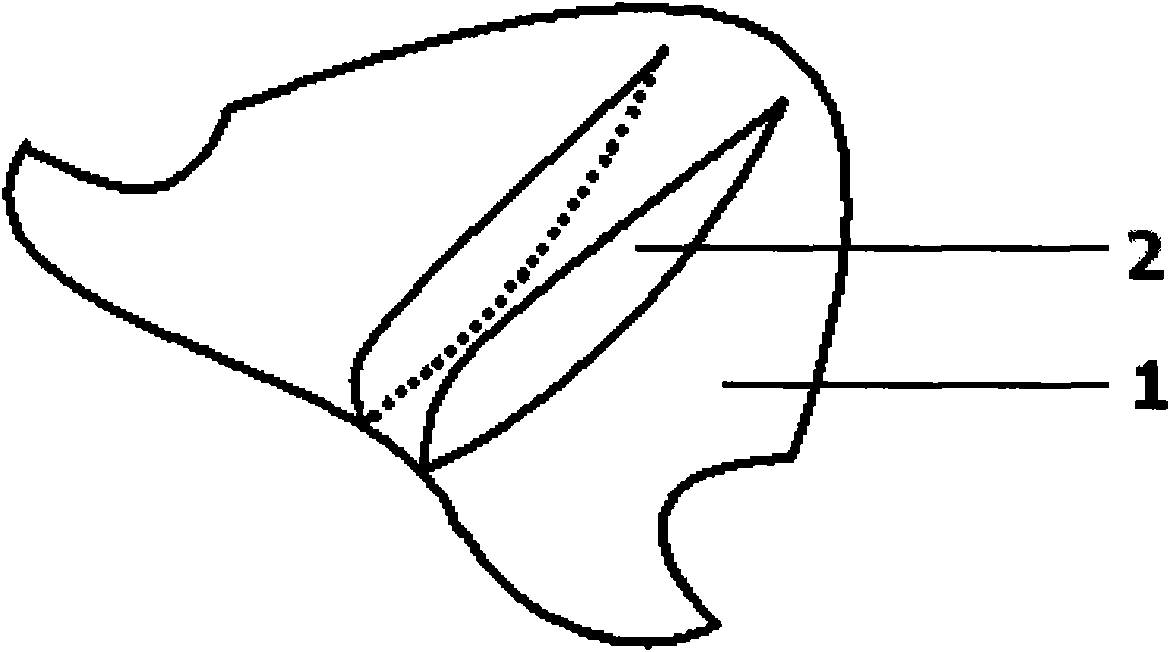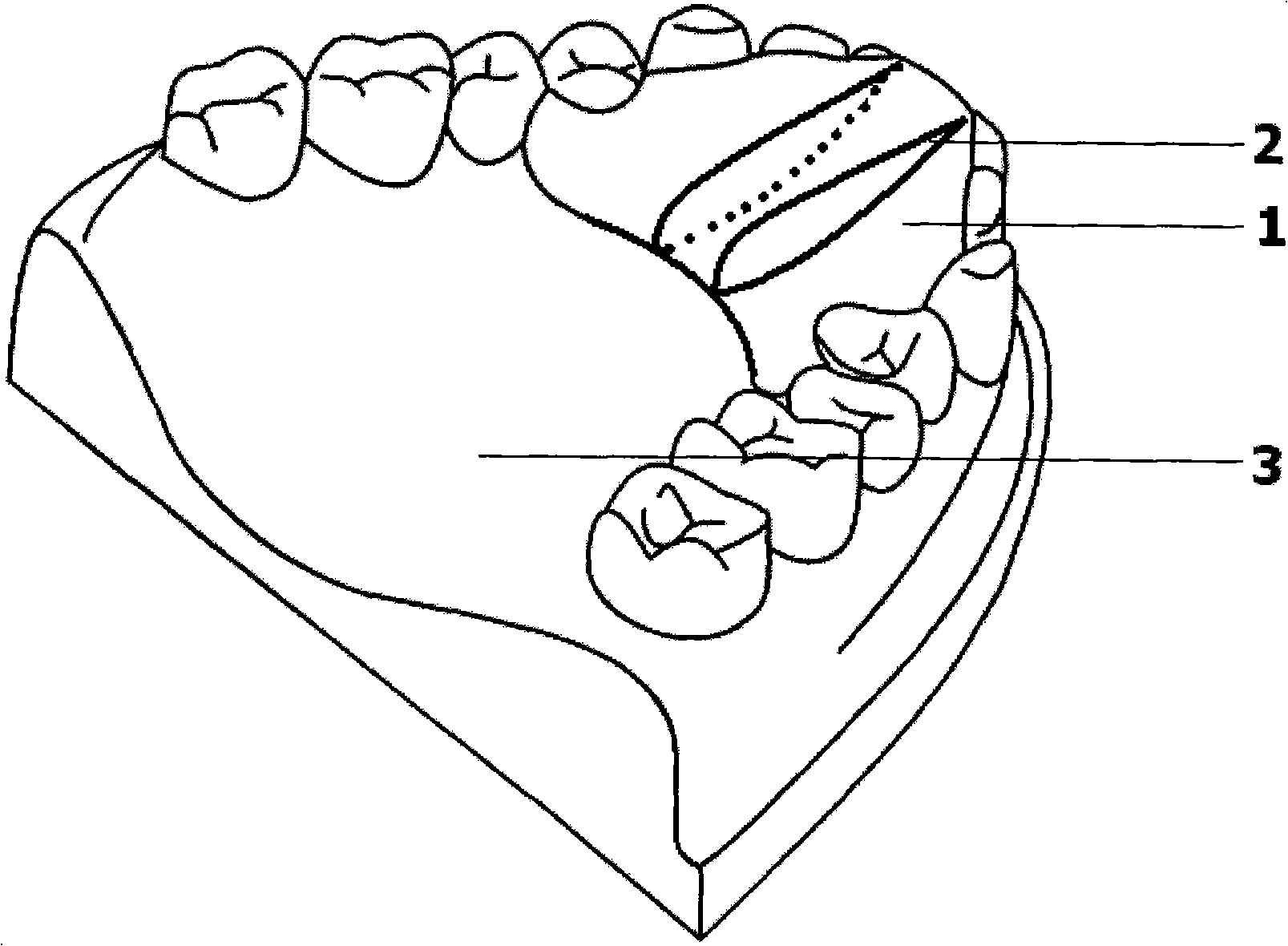Biteplate for improving trigeminal noxious inhibitory-stress relief system and using method thereof
A trigeminal nerve and occlusal plate technology, applied in medical science, non-surgical orthopaedic surgery, dentistry, etc., can solve the problems of lower anterior teeth pressing, lip tilting, etc., and achieve a good retention effect
- Summary
- Abstract
- Description
- Claims
- Application Information
AI Technical Summary
Problems solved by technology
Method used
Image
Examples
Embodiment 1
[0025] Press the following parts to figure 1 Those skilled in the art can successfully implement the connection in the manner shown. The palatal plate 1 is in the shape of a semicircle, with a thickness of about 2mm, a height of about 20-30mm, and a base length of about 30-40mm. The lower incisor guiding plane 2 is a long strip-shaped protrusion with a flat front and a thick rear, and the final thickness is about 10mm.
[0026] The method of using the above-mentioned occlusal plate is as follows:
[0027] 1. Take the patient's upper and lower jaw dentition model (such as figure 2 ).
[0028] 2. Transfer the patient's occlusal relationship to a semi-adjustable or fully adjustable articulator.
[0029] 3. According to the maxillary model of the patient, a preliminary model of the improved NTI-tss occlusal plate was made using soft wax with a low melting point.
[0030] The specific production steps are:
[0031] (1) Make the palate plate 1 . Spread the wax sheet on the u...
PUM
 Login to View More
Login to View More Abstract
Description
Claims
Application Information
 Login to View More
Login to View More - R&D
- Intellectual Property
- Life Sciences
- Materials
- Tech Scout
- Unparalleled Data Quality
- Higher Quality Content
- 60% Fewer Hallucinations
Browse by: Latest US Patents, China's latest patents, Technical Efficacy Thesaurus, Application Domain, Technology Topic, Popular Technical Reports.
© 2025 PatSnap. All rights reserved.Legal|Privacy policy|Modern Slavery Act Transparency Statement|Sitemap|About US| Contact US: help@patsnap.com



